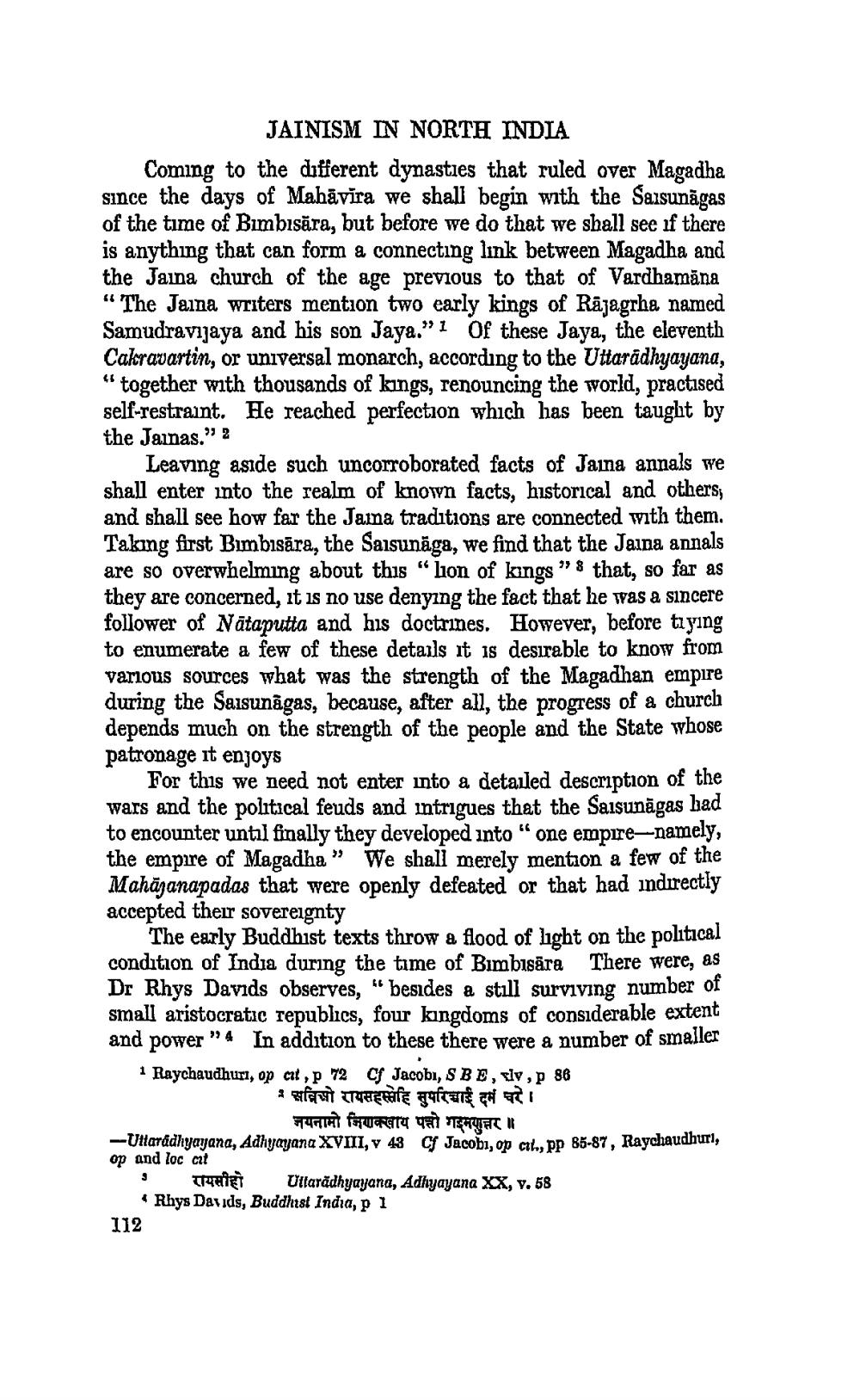________________ JAINISM IN NORTH INDIA Coming to the different dynasties that ruled over Magadha since the days of Mahavira we shall begin with the Sansunagas of the time of Bimbisara, but before we do that we shall see if there is anything that can form a connecting link between Magadha and the Jaina church of the age previous to that of Vardhamana "The Jama writers mention two early kings of Rajagtha named Samudravijaya and his son Jaya." 1 Of these Jaya, the eleventh Cakravartin, or universal monarch, according to the Uttaradhyayana, "together with thousands of kings, renouncing the world, practised self-restraint. He reached perfection which has been taught by the Jainas." 2 Leaving aside such uncorroborated facts of Jaina annals we shall enter into the realm of known facts, historical and others; and shall see how far the Jaina traditions are connected with them. Taking first Bimbisara, the Saisunaga, we find that the Jaida annals are so overwhelming about this " lion of kings" that, so far as they are concerned, it is no use denying the fact that he was a sincere follower of Nataputta and his doctrines. However, before trying to enumerate a few of these details it is desirable to know from varous sources what was the strength of the Magadhan empire during the Saisunagas, because, after all, the progress of a church depends much on the strength of the people and the State whose patronage it enjoys For this we need not enter into a detailed description of the wars and the political feuds and intrigues that the Saisunagas had to encounter until finally they developed into one empire-namely, the empire of Magadha" We shall merely mention a few of the Mahajanapadas that were openly defeated or that had indirectly accepted therr sovereignty The early Buddhist texts throw a flood of light on the political condition of India during the time of Bimbisara There were, as Dr Rhys Davids observes," besides a still surviving number of small aristocratic republics, four kingdoms of considerable extent and power " 4 In addition to these there were a number of smaller 1 Raychaudhuri, op cit,p 72 of Jacobi, SBE, lv, p 86 अविभो रायसहस्तेहि सुपरिचाई दर्म परे / जयनामो जिणक्खाय पत्तो गइमणुन्नर। -Ullaridhyayang, Adhyayana XVIII, v 43 Cf Jacobi, op cit. pp 85-87, Raychaudhurly op and loc at 3 THIET Ultaradhyayana, Adhyayana XX, v. 58 * Rhys Davids, Buddhat India, 1 112




